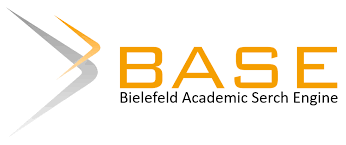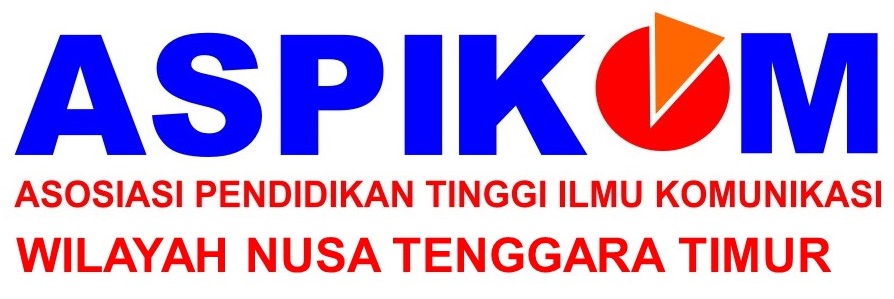Author Guidelines
JURNAL COMMUNIO: JURNAL JURUSAN ILMU KOMUNIKASI
Submission of a manuscript to Jurnal Communio must comply with the following requirements:
- Manuscripts submitted for publication in Jurnal Communio must be based on original research and must not have been previously published or be under review in any other journal.
- The manuscript should be written in either Bahasa Indonesia or English, with a length of 4,000 to 6,000 words, using Times New Roman, 12-point font, double spacing, 2.5 cm margins, and page numbers placed at the bottom right corner.
- The writing format and structure of the manuscript should include the following sections: Article Title, Author’s Name, Abstract, Introduction, Research Method, Results and Discussion, Conclusions, and Bibliography.
- Title. Written in Bahasa Indonesia or English, the title should not exceed two lines and must contain a maximum of 15 words that accurately reflect the essence of the article. It should be typed in Times New Roman, 14 pt, bold, single-spaced, and centered.
- Name of author(s) and institution. The names of the authors (maximum four) should be written without academic degrees, religious titles, or professional positions, followed by the institutional affiliation, address, email, and phone number of the corresponding author. This section should be typed in Times New Roman, 10 pt, single-spaced, and centered.
- Abstract. Each article must include abstracts in both Bahasa Indonesia and English, each between 150–200 words, typed in Times New Roman, 10 pt, single-spaced, and justified. The abstract should include the background, problem statement, objectives, methods, findings, and conclusion.
- Keywords. Written in Bahasa Indonesia (for manuscripts in Bahasa Indonesia) and English (for manuscripts in English), consisting of 3–5 relevant words or phrases.
- Introduction. Begin with the subtitle INTRODUCTION (capitalized, 12 pt, bold). This section should present the research background, literature review, research questions, and/or objectives, with a length of +1,000 words. No other subtitles may be used in this section.
- Method. Begin with the subtitle METHOD (capitalized, 12 pt, bold). This section should describe the research method, data collection procedures, and data analysis techniques, with a length of 500 to 1,000 words. No other subtitles are allowed.
- Research Findings. Begin with the subtitle RESEARCH FINDINGS (capitalized, 12 pt, bold). This section presents the research results in relation to the objectives and may include tables, figures, graphs, and photographs as supporting data, with a length of 2,000 to 3,000 words. The use of subtitles within this section is allowed.
- The DISCUSSION section (capitalized, 12 pt, bold) follows immediately and should interpret and elaborate on the findings in an academic manner, comparing them with relevant theories and previous studies. The total length of the research findings and discussion should be 1,500 to 3,000 words. No additional subtitles are recommended.
- Conclusions. Begin with the subtitle CONCLUSIONS (capitalized, 12 pt, bold). This section should summarize the key findings and provide clear answers to the research questions and/or objectives, with a length of 300 to 500 words. No other subtitles may be used.
- Bibliography. Begin with the subtitle BIBLIOGRAPHY (capitalized, 12 pt, bold). All references cited in the article must appear in the reference list. The bibliography should include a minimum of 25 references, with at least 80% sourced from journal articles published within the last 10 years.
- Citations should follow the parenthetical citation style (author’s last name, year), e.g., (Liliweri, 2016).
The bibliography should be arranged alphabetically, single-spaced, and formatted according to the APA 7th edition style, as illustrated below.
Book:
Liliweri, A. (2016). Konfigurasi Dasar Teori-teori Komunikasi Antar Budaya. Bandung: Nusamedia
Book compiled by several authors:
Morley, D., & Silverstone, R. (2005). Domestic Communication: Technologies and Meanings. In David Morley (ed), Television, Audiences and Cultural Studies (h. 191–202). London and New York: Routledge.
E-book:
Perry, D.K. (2001). Theory and Research in Mass Communication: Contexts and Consequences. New York: Lawrence Erlbaum. Retrieved from <http://93.174.95.29/_ads/EE068E8D5EF4C5939CD4AAE555009D0E>
Journal:
Sulaiman, A. I., Sugito, T., & Sabiq, A. (2016). Komunikasi pembangunan partisipatif untuk pemberdayaan buruh migran. Jurnal Ilmu Komunikasi, 13(2), 233-252.
Internet:
Setianto, Y.P. (2011). Berita Konflik: Suatu Kritik Peran Media sebagai Ruang Publik dan Pilar Demokrasi. <https://yearrypanji.wordpress.com>
Newspaper or Magazine Article:
Pariangu, U.T.W. (2019, Oktober 31). Masa depan suram demokrasi kita. Koran Tempo, h.4.
Documents:
Undang-undang Republik Indonesia Nomor 20 Tahun 2003.tentang Sistem Pendidikan Nasional. (2003). Jakarta: Depdiknas.
Unpublished Scientific Work (Thesis, Dissertation, and Research Report)
Robot, M. (2010). Strategi Komunikasi Masyarakat Perbatasan WNI-Indonesia dan Oecusse Timor Leste. Laporan Penelitian. Universitas Nusa Cendana. Kupang, Indonesia.
-
Articles can be uploaded via the OJS system: https://ejurnal.undana.ac.id/JIKOM/
-
The author(s) will receive two complimentary hard copies of the journal. Additional hard copies may be ordered for Rp. 50,000 per copy (excluding shipping fees). For international orders, a minimum order of 10 copies is required.
-
For further information, please contact the editor-in-chief or the support team.
- Journal templates can be accessed here.










 The articles in Jurnal Communio are licensed under a
The articles in Jurnal Communio are licensed under a 